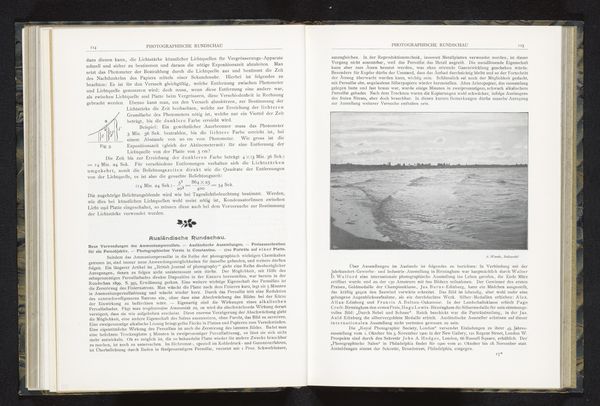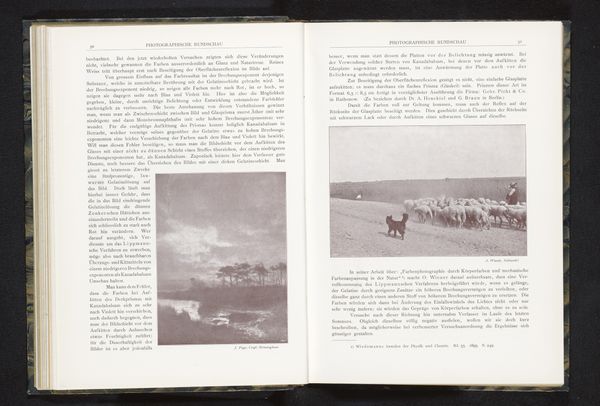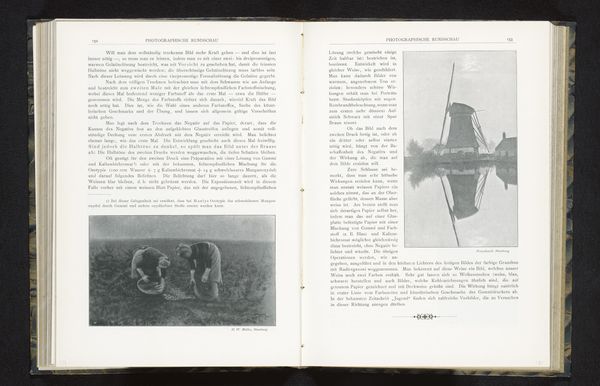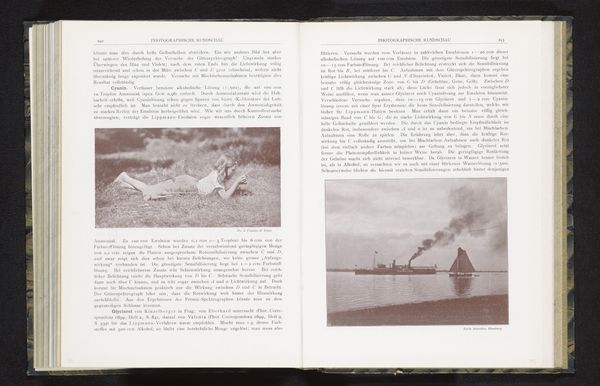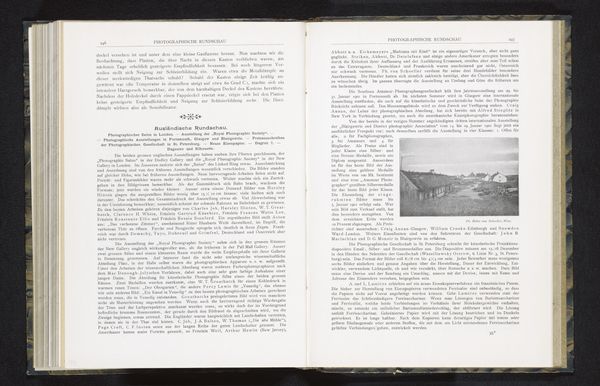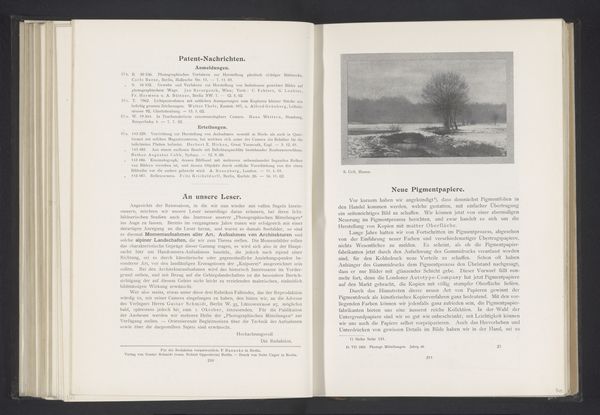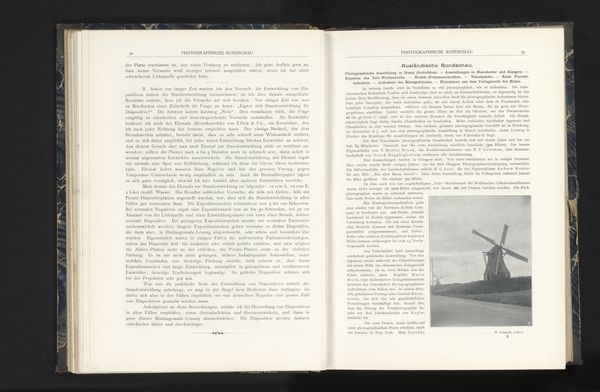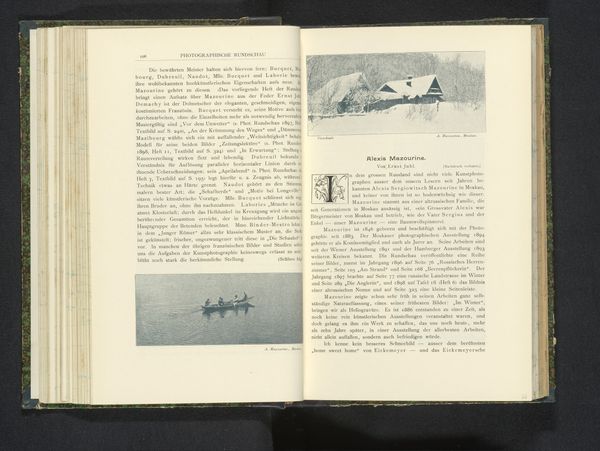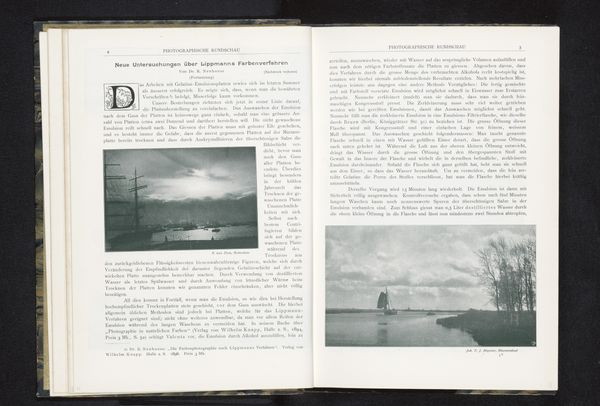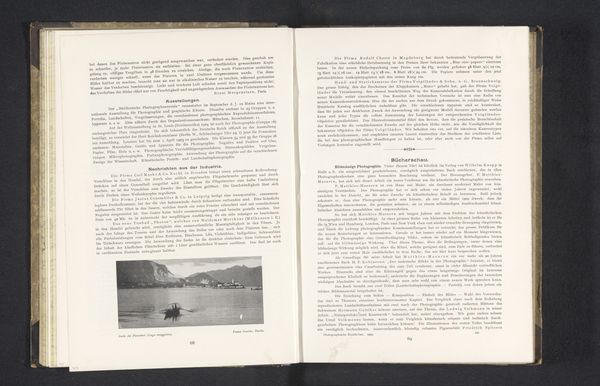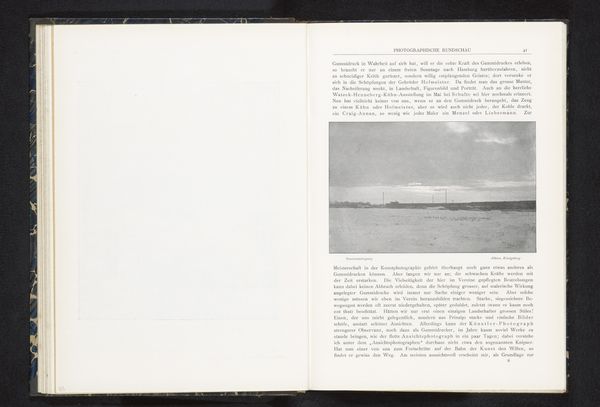
print, photography, gelatin-silver-print
#
aged paper
#
still-life-photography
# print
#
landscape
#
photography
#
gelatin-silver-print
#
historical font
Dimensions: height 55 mm, width 95 mm
Copyright: Rijks Museum: Open Domain
Curator: This is a fascinating page from an early photography journal featuring an image entitled "Grootoogbaars," which translates to "Bigeye Bass," taken before 1900. The image itself is a gelatin-silver print. Editor: There's a wonderful, quiet intensity to it, like an early scientific observation rendered with remarkable care. It’s like a serene world contained within this single book page. Curator: Absolutely. The image and the way the animal is rendered give off almost mythical associations despite the scientific attempt to classify it in its era. Fish, across cultures, carry profound symbolism related to fertility, transformation, and the subconscious. This particular fish, floating ethereally, seems almost like a dream apparition. Editor: You see that dreamlike quality too! I’m also struck by the text surrounding the image. This book becomes an artifact of a specific moment in the popularization of photography—early photographic communities forging best practices for aquarium documentation in periodicals, democratizing knowledge, sharing these insights, right on these pages. Curator: Yes! And the fact that this is captured on aged paper with what looks like historical font enhances that sense of cultural memory. It connects us directly to the late 19th century, offering a window into how knowledge was disseminated and appreciated at the time. It almost becomes a secular sacred object. Editor: Do you think photography helped redefine how we related to the natural world during this period? Replacing illustration with ‘mechanical objectivity' might have influenced perceptions quite drastically, from folklore to something documentable. Curator: Undoubtedly. The rise of photography coincides with new modes of classifying the world—consider developments in biology and taxonomy during the same era. This is why images of the type in publications such as these are invaluable when looking at our perception of the natural world during the scientific enlightenment period. Editor: The way the image is consumed inside this vessel becomes more crucial: A tangible format, allowing information exchange. Curator: Yes, its continued value remains embedded within its accessible artifact qualities—not as some untouchable art object in a gallery. Editor: An evocative encounter—that old printing press texture combined with the ephemeral feel of the aquatic world. Thanks!
Comments
No comments
Be the first to comment and join the conversation on the ultimate creative platform.

